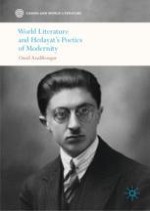
2020 | OriginalPaper | Chapter
1. Persian Literature, World Literature
Author : Omid Azadibougar
Published in: World Literature and Hedayat’s Poetics of Modernity
Publisher: Springer Singapore
Activate our intelligent search to find suitable subject content or patents.
Select sections of text to find matching patents with Artificial Intelligence. powered by
Select sections of text to find additional relevant content using AI-assisted search. powered by